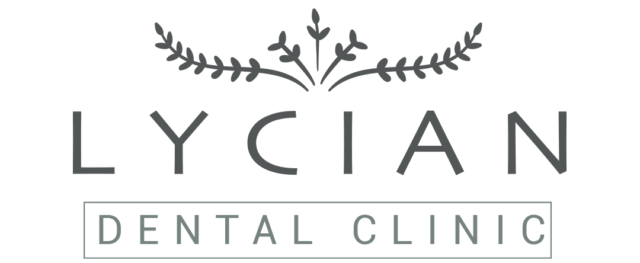Composite fillings have become the gold standard in modern restorative dentistry, offering a versatile and aesthetically pleasing solution for repairing decayed, damaged, or discolored teeth. Unlike traditional amalgam fillings, composite fillings are tooth-colored and blend seamlessly with the natural tooth structure, providing both functional and cosmetic benefits. In this comprehensive guide, we delve into the techniques and procedures used in composite fillings, with a special emphasis on the renowned Lycian Clinic, known for its professional approach and exceptional patient care.
Understanding Composite Fillings
Composite fillings, also known as tooth-colored or white fillings, are made of a mixture of resin and finely ground glass particles. This composite material can be precisely color-matched to the patient’s natural tooth shade, ensuring a seamless restoration that is virtually indistinguishable from the surrounding teeth. Composite fillings offer several advantages over traditional amalgam fillings, including improved aesthetics, minimal tooth preparation, and the ability to bond directly to the tooth structure, thereby strengthening the tooth and reducing the risk of fracture.
Techniques in Composite Fillings
- Patient Assessment and Diagnosis: The first step in the composite filling process is a thorough examination and diagnosis of the patient’s dental condition. The dentist assesses the extent of tooth decay or damage using clinical examination, dental x-rays, and other diagnostic tools. Based on the findings, a treatment plan is formulated to address the problem and restore the tooth’s function and appearance.
- Anesthesia and Patient Comfort: Before initiating the filling procedure, local anesthesia is administered to numb the affected tooth and surrounding tissues, ensuring a pain-free experience for the patient. At Lycian Clinic, patient comfort and satisfaction are paramount, and the dental team takes measures to alleviate anxiety and ensure a relaxed environment throughout the treatment process.
- Tooth Preparation: The decayed or damaged portion of the tooth is carefully removed using specialized dental instruments, such as drills or lasers. Unlike amalgam fillings, which require mechanical retention (undercuts) in the tooth structure, composite fillings bond directly to the tooth enamel and dentin, necessitating minimal tooth preparation and preserving more healthy tooth structure.
- Isolation and Moisture Control: To achieve optimal bonding and longevity of the composite filling, proper isolation and moisture control are essential. Rubber dam isolation or specialized dental instruments may be used to keep the tooth dry and free from saliva contamination during the filling procedure, ensuring a durable and long-lasting restoration.
- Composite Material Selection and Shade Matching: At Lycian Clinic, a wide range of composite materials is available to suit the specific needs and preferences of each patient. The dentist carefully selects the appropriate shade and translucency of the composite resin to achieve a seamless blend with the natural tooth color, ensuring a lifelike and aesthetically pleasing result.
- Layering Technique: Composite fillings are typically placed in layers, with each layer being cured (hardened) using a curing light before the next layer is applied. This layering technique allows the dentist to sculpt and contour the filling material to match the natural anatomy of the tooth and create a smooth, polished surface.
- Incremental Build-Up: Composite fillings are built up incrementally to ensure proper adaptation to the tooth structure and minimize the risk of voids or gaps. The dentist carefully shapes and contours each layer of composite material to recreate the natural contours and contours of the tooth, achieving optimal functional and aesthetic results.
- Finishing and Polishing: Once the composite filling is fully sculpted and shaped, it is polished to a high shine using specialized polishing instruments and abrasive materials. This final step enhances the appearance of the restoration, smoothens any rough edges or surfaces, and ensures a comfortable bite for the patient.
- Bite Adjustment and Occlusal Check: After the filling is placed and polished, the dentist performs a bite adjustment to ensure that the restored tooth fits harmoniously with the opposing teeth and occludes properly during chewing and biting movements. Any occlusal interferences or discrepancies are addressed to optimize the patient’s occlusal function and prevent premature wear or damage to the restoration.
- Postoperative Care and Instructions: Patients are provided with postoperative instructions and care guidelines to promote healing and minimize discomfort following composite filling placement. They may be advised to avoid hard or sticky foods, practice good oral hygiene, and attend follow-up appointments for routine check-ups and maintenance.
Why Choose Lycian Clinic for Composite Fillings?
Lycian Clinic is widely recognized for its excellence in restorative dentistry and patient-centered care. Here are some reasons why patients choose Lycian Clinic for composite fillings:
- Expertise and Experience: The dental team at Lycian Clinic comprises highly skilled and experienced dentists, specializing in restorative and cosmetic dentistry. Their expertise in composite filling techniques ensures precise and reliable results, tailored to each patient’s unique needs and preferences.
- Advanced Technology and Materials: Lycian Clinic is equipped with state-of-the-art dental technology and materials, allowing for precise diagnosis, treatment planning, and execution of composite fillings. High-quality composite materials and innovative bonding systems are utilized to achieve durable, lifelike restorations with superior esthetics and longevity.
- Customized Treatment Approach: At Lycian Clinic, every patient receives personalized care and attention, with treatment plans tailored to their individual dental concerns and goals. The dental team collaborates closely with patients to address their needs, answer questions, and ensure a comfortable and positive experience throughout the filling process.
- Commitment to Excellence: Lycian Clinic is committed to delivering excellence in dental care, with a focus on patient satisfaction and quality assurance. The clinic adheres to strict standards of sterilization, infection control, and safety protocols to ensure the highest level of care and protection for patients.
- Affordability and Accessibility: Turkey is known for offering high-quality dental care at affordable prices, making it an attractive destination for patients seeking dental treatments such as composite fillings. Lycian Clinic provides competitive pricing without compromising on the quality of care, making it a cost-effective option for both local and international patients.
- Multilingual Staff and Hospitality: The staff at Lycian Clinic is multilingual and fluent in English, Turkish, and other languages, ensuring effective communication and a comfortable experience for international patients. The clinic also provides assistance with travel arrangements, accommodation, and local attractions, making it convenient for patients traveling from abroad.
Conclusion
Composite fillings have revolutionized restorative dentistry, offering a durable, esthetic, and minimally invasive solution for treating dental decay and damage. By understanding the techniques and procedures involved in composite fillings, patients can make informed decisions about their dental care and achieve optimal outcomes. With its commitment to professionalism, innovation, and patient-centered care, Lycian Clinic Turkey remains a trusted destination for composite fillings and other dental treatments. Whether restoring a single tooth or performing a complete smile makeover, patients can trust Lycian Clinic to deliver exceptional results and enhance their oral health and confidence with composite fillings.


